The Mona Lisa
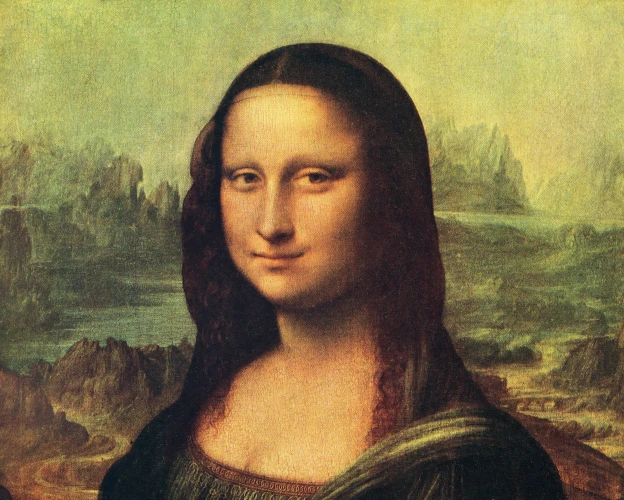
“The Mona Lisa” by Leonardo da Vinci is a painting that was completed around 1504 and is believed to depict Lisa Gherardini, the wife of a Florentine merchant. The painting is known for its enigmatic and elusive quality, with the subject’s slight smile and gaze captivating viewers for centuries.
Da Vinci employed a technique called sfumato, which involves layering thin glazes of oil paint to create a hazy, atmospheric effect. This technique is evident in the painting’s soft, blended edges and the way the figure seems to emerge from a misty landscape.
The Mona Lisa has been the subject of much speculation and interpretation over the years. Some have speculated that the smile may hold a hidden meaning or that the painting contains secret messages encoded in its composition. Others have suggested that the painting’s enduring popularity may be due in part to its many reproductions and reproductions in pop culture, such as in the “Mona Lisa” meme.
Despite the many theories and interpretations, “The Mona Lisa” remains one of the most famous and beloved paintings in the world. It is housed in the Louvre Museum in Paris, where it is a centerpiece of the museum’s collection and draws millions of visitors each year.
The Last Supper
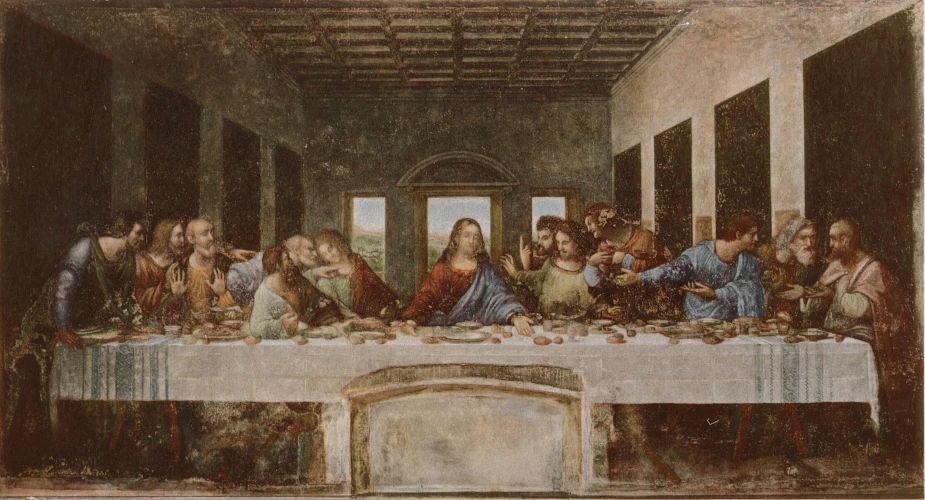
“The Last Supper” by Leonardo da Vinci is a mural painting located in the refectory of the Convent of Santa Maria delle Grazie in Milan, Italy. It was painted between 1495 and 1498 and is considered one of the greatest masterpieces of the High Renaissance.
The painting depicts Jesus’ last meal with his disciples before his crucifixion, as described in the Christian Bible. The scene shows Jesus seated at the center of a long table, surrounded by his disciples, who are depicted in various states of shock and disbelief upon hearing Jesus’ announcement that one of them will betray him. The painting captures the moment of dramatic tension in which Jesus says, “One of you will betray me,” and the disciples react with surprise and disbelief.
One of the most notable aspects of “The Last Supper” is da Vinci’s use of perspective and composition. The table and figures are arranged in such a way that the viewer is drawn into the scene, as if sitting at the table with the disciples. The painting’s dramatic lighting and attention to detail also contribute to its powerful effect.
Over the years, “The Last Supper” has suffered damage from environmental factors, including humidity and war, as well as from various restoration attempts. Despite this, it remains a beloved and iconic work of art, and its influence can be seen in countless depictions of the Last Supper in art, literature, and popular culture.
The Scream
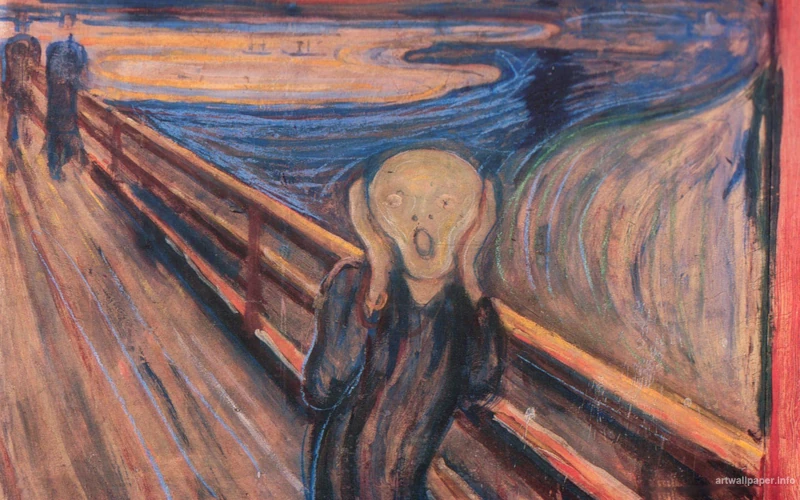
“The Scream” by Edvard Munch is an iconic expressionist painting that was created in 1893. It depicts a figure standing on a bridge, with its head thrown back in a scream of despair, while the cityscape behind it swirls in a chaotic and distorted manner. The figure’s face is distorted, with bulging eyes and an open mouth that seems to be releasing a primal scream.
The painting has been interpreted as a representation of the existential angst and despair that can arise in modern life, and it has become a symbol of modern anxiety and alienation. Munch himself described the inspiration for the painting as coming from a moment in which he felt a “scream passing through nature.”
“The Scream” has been the subject of much critical acclaim and analysis, with art historians and critics praising the painting’s use of color, composition, and emotion. It has also become one of the most recognizable images in the world, and has been referenced in popular culture and parodied in various forms of media.
Munch created several versions of “The Scream,” including a tempera and crayon on cardboard version, which was stolen from the National Gallery in Oslo in 1994, and a pastel version, which sold at auction in 2012 for a record-breaking $119.9 million. The painting remains a haunting and enduring symbol of human emotion and the challenges of modern life.
Starry Night
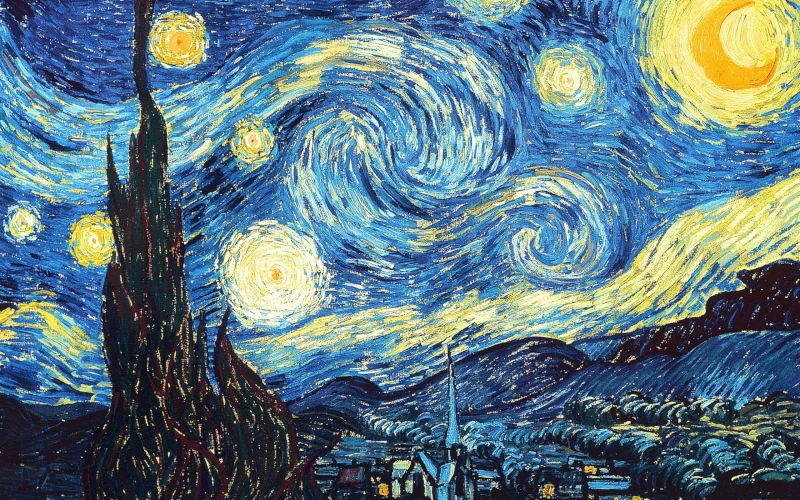
“Starry Night” is a post-impressionist oil painting created by Vincent van Gogh in 1889 while he was staying at an asylum in Saint-Remy-de-Provence, France. The painting depicts a view from the window of Van Gogh’s room at the asylum, looking out over a village, a cypress tree, and a starry night sky.
The painting is renowned for its swirling, vibrant colors, which capture the intense emotions and energy of the night sky. Van Gogh used thick, impasto brushstrokes and bold colors to create a sense of movement and dynamism in the painting. The cypress tree in the foreground is depicted as a dark, dramatic shape that seems to reach up towards the sky, while the swirling stars and moon create a sense of depth and mystery.
The painting is often seen as a representation of Van Gogh’s own struggles with mental illness and his longing for spiritual and emotional connection with the world. The bright colors and swirling shapes have been interpreted as a reflection of Van Gogh’s own inner turmoil and emotional intensity.
Despite its now-iconic status, “Starry Night” was not well-received by critics during Van Gogh’s lifetime. The artist himself struggled with poverty, mental illness, and self-doubt, and tragically died by suicide in 1890 at the age of 37. However, in the years since his death, his work has come to be celebrated as some of the most important and influential in the history of art.
Guernica
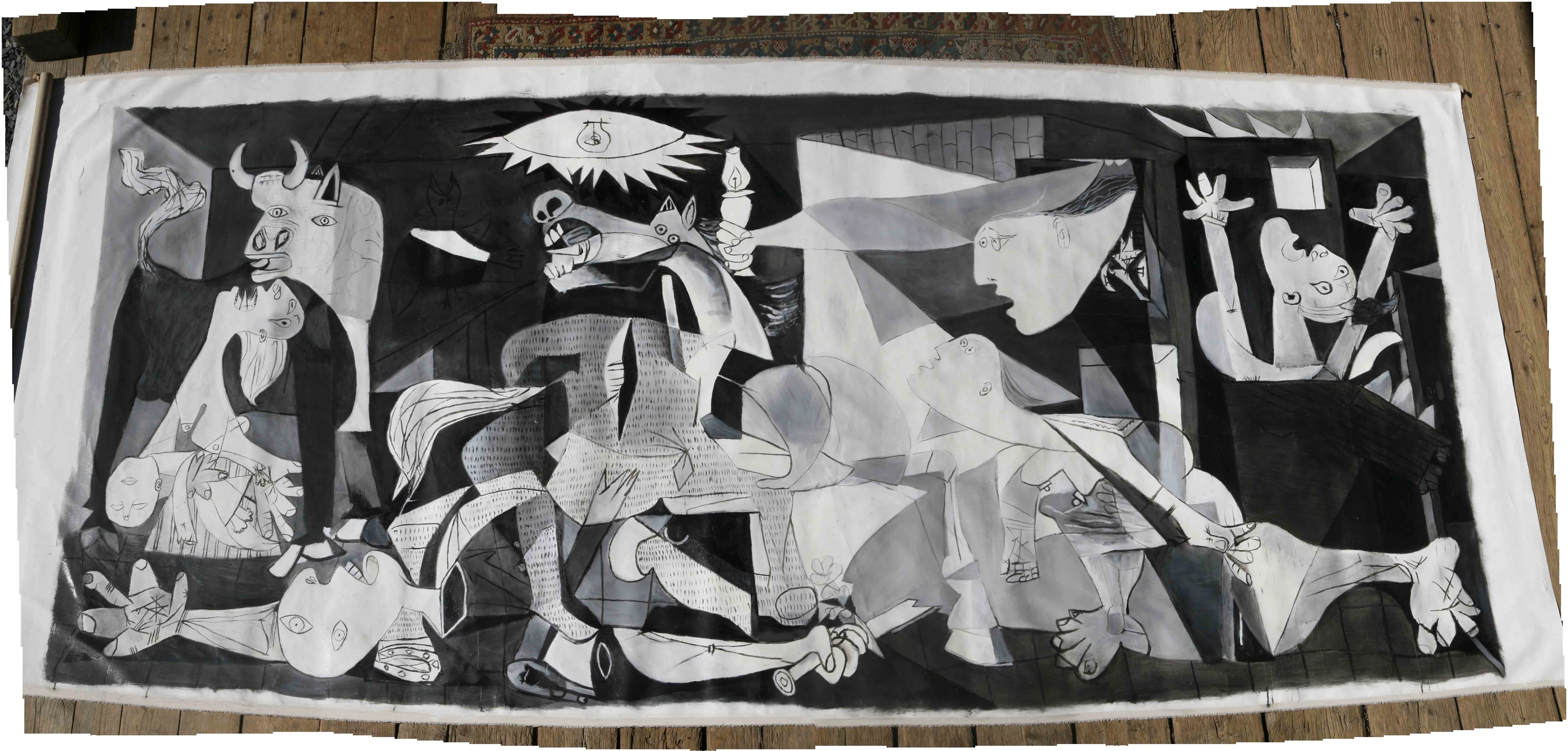
“Guernica” is a powerful anti-war painting by Pablo Picasso, created in 1937 in response to the bombing of the town of Guernica during the Spanish Civil War. The painting is a large, monochromatic work in shades of gray, black, and white, and depicts the horror and chaos of war.
The painting features distorted figures and shapes that appear to be both human and animal, including a bull, a horse, and a mother holding a dead child. The composition is intentionally jarring and disorienting, with limbs and body parts appearing to be twisted and broken. The painting is a stark and haunting representation of the violence and devastation of war.
“Guernica” quickly became a symbol of peace and anti-war activism, and has been displayed around the world as a powerful reminder of the human cost of conflict. It has been interpreted as a commentary on the horrors of war and the need for peace and understanding between peoples and nations.
The painting was first displayed at the Paris World’s Fair in 1937, and was later exhibited around the world. It was initially housed at the Museum of Modern Art in New York City, but was returned to Spain in 1981, where it is now on display at the Museo Nacional Centro de Arte Reina Sofia in Madrid.
“Guernica” remains one of the most powerful and influential works of art of the 20th century, and its impact on the art world and on the collective consciousness of humanity is immeasurable.
The Persistence of Memory
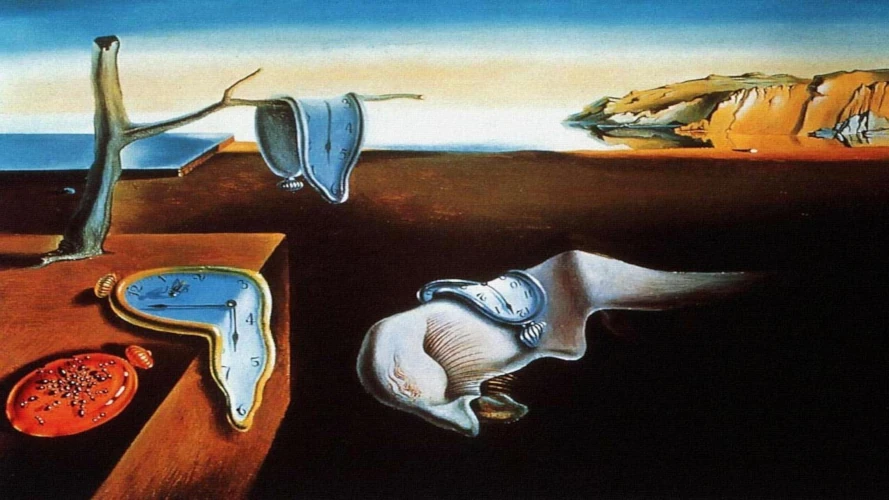
“The Persistence of Memory” is a surrealist painting by Salvador Dalí, created in 1931. The painting features a barren landscape with melting watches draped over various objects, including a tree branch and a face. The painting also includes ants crawling over the distorted forms, adding to the sense of unease and dislocation.
The painting is often interpreted as a representation of the fluidity and relativity of time, as well as the fragility and transience of human existence. The melting clocks appear to be in a state of flux, as if time itself is melting away, while the barren landscape suggests a sense of emptiness and decay.
The painting has become an icon of 20th century art, and is widely recognized as one of the most famous and influential works of surrealism. The strange and haunting imagery has captured the imaginations of viewers for decades, and has been interpreted in a variety of ways by art historians and critics.
Dalí himself was a major figure in the surrealist movement, and his work often explored the realm of dreams and the subconscious. “The Persistence of Memory” is a prime example of his style, which blended realistic and recognizable forms with fantastical and irrational elements to create a sense of dislocation and confusion.
Today, “The Persistence of Memory” is housed at the Museum of Modern Art in New York City, where it is one of the most popular and celebrated works in the museum’s collection.
Les Demoiselles d’Avignon
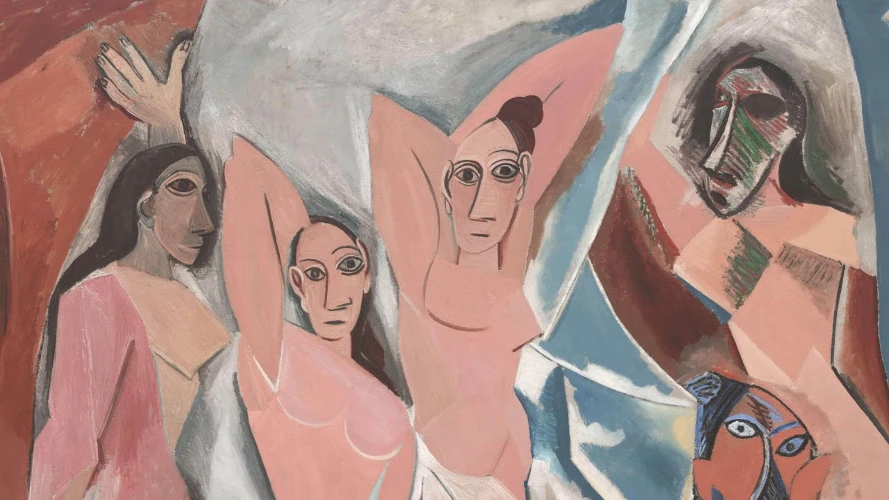
“Les Demoiselles d’Avignon” is a cubist masterpiece by Pablo Picasso, painted in 1907. The painting depicts five female figures in a brothel, each depicted in a fragmented and distorted manner, with sharp angles and jagged lines. The figures are depicted in a radical and groundbreaking way that challenged traditional notions of perspective and representation.
The painting was a turning point in the development of cubism, a movement that sought to break down traditional notions of space and representation. Picasso and his contemporaries sought to create a new visual language that reflected the changing nature of the modern world. “Les Demoiselles d’Avignon” is considered one of the most important works of this movement, and has had a profound impact on modern art.
The painting was initially met with shock and controversy when it was first exhibited, due to its radical departure from traditional notions of beauty and representation. However, it has since become recognized as a masterpiece and an important contribution to the development of modern art.
Today, “Les Demoiselles d’Avignon” is housed at the Museum of Modern Art in New York City, where it is one of the most celebrated and studied works in the museum’s collection. It is widely considered to be one of the most important and influential works of the 20th century, and continues to inspire and challenge artists to this day.